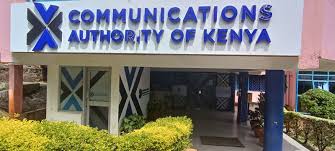Kenya has proposed an allocation of Sh16.5 billion to extend the Standard Gauge Railway (SGR) from Naivasha to the Malaba border, marking a pivotal step in the country’s push to enhance regional trade and lower transport costs. The 369-kilometre rail extension is expected to open up economic opportunities in Western Kenya while positioning the corridor as a key logistics gateway for landlocked neighbors including Uganda, Rwanda, South Sudan, Burundi, and the Democratic Republic of Congo.
At the heart of this initiative is a vision to unlock the untapped economic potential of Western Kenya while reducing reliance on inefficient and often costly road transport. The proposed rail line promises to transform the region’s connectivity, linking the Port of Mombasa directly to Uganda, Rwanda, South Sudan, the Democratic Republic of Congo, and Burundi. For landlocked neighbors, this development is crucial. It guarantees smoother, faster, and more secure access to the Indian Ocean, while enabling Kenyan producers and logistics operators to offer more competitive services across East and Central Africa.
President William Ruto has underscored the government’s unwavering focus on completing the SGR to Malaba. He has framed the railway not only as a domestic economic catalyst but also as a regional game-changer. “The SGR extension to Malaba will allow traders to transport cargo seamlessly from the Port of Mombasa to Uganda, Rwanda, South Sudan, DRC, and Burundi—boosting intra-African trade and reducing reliance on road transport,” he noted. The President’s statement captures the twin goals of the project: unlocking efficiencies in logistics while accelerating regional integration.
Extending the SGR is also central to Kenya’s role in realizing the African Continental Free Trade Area (AfCFTA). The vision of a borderless trade area across the continent depends on reliable, modern infrastructure. By pushing the SGR toward Malaba, Kenya is not just building rail tracks; it is laying the groundwork for a future in which African goods flow freely, efficiently, and cost-effectively between countries.
The economic dividends are both immediate and long-term. In the short term, the project will generate thousands of jobs across its construction phase, energize local economies along its corridor, and boost demand for raw materials, engineering services, and labor. The allocation of Sh16.5 billion by the Kenyan Treasury to fund the extension underscores the seriousness with which the government is pursuing this initiative. This is the first time such funds have been committed to the construction of the 369-kilometre stretch to Kisumu and Malaba, signaling that the dream of a seamless rail corridor from the coast to the border is finally within reach.
In the long term, the SGR extension is expected to radically shift logistics preferences. Although the Kenya Association of Manufacturers (KAM) notes that some businesses still lean toward road transport due to flexibility and perceived cost advantages, the new line will likely tip the scales. Rail transport, particularly for bulk cargo, is inherently more efficient and less prone to the delays and degradation associated with road infrastructure. Once extended to Malaba, the SGR will provide a high-capacity, lower-cost alternative that can move goods across vast distances with predictability and speed. This would help manufacturers reduce their logistics overheads and strengthen Kenya’s industrial base.
The project also strengthens Kenya’s bid to become the undisputed transport and logistics hub of East and Central Africa. The initial phase of the SGR, stretching from Mombasa to Naivasha and completed in 2019, has already demonstrated the transformative impact of rail infrastructure. Over 10 million passengers have used the Madaraka Express service between Mombasa and Nairobi, while cargo volumes reached 6.4 million metric tonnes for the year ending June 2024. These figures reflect the growing confidence in rail as a mode of transport and underscore the capacity of SGR to scale even further with expanded reach.
China remains a pivotal partner in this effort, with Chinese firms having played a significant role in financing and constructing Kenya’s flagship infrastructure projects. From the Nairobi Expressway to the initial SGR lines, the partnership has delivered tangible results. Continued collaboration with China could provide the financing, technical expertise, and momentum needed to bring the Malaba extension to completion within a reasonable timeframe.
Kenya’s broader economic strategy hinges on such infrastructure. With the right logistics backbone, the country can leverage its geographical advantage to dominate trade routes serving over 300 million people in the East African region. Moreover, a completed SGR to the Malaba border complements broader industrialization goals, supporting the development of export processing zones, logistics parks, and intermodal transport nodes that can stimulate manufacturing and value addition.
In essence, the SGR extension is not a standalone project. It is part of a larger, carefully designed plan to modernize Kenya’s economy, deepen regional ties, and position the country as a pivotal player in Africa’s trade future. By facilitating quicker movement of goods and people, the rail line will enable faster responses to market demands, reduce carbon emissions compared to road transport, and open up new investment opportunities for private and public sector players alike.
As Kenya mobilizes domestic and international resources to make this vision a reality, the extension of the SGR to Malaba represents a positive, strategic, and necessary step forward. It is a project that promises to pay dividends well beyond its tracks—fueling growth, connecting markets, and transforming lives across the region.
Kenya’s foreign exchange reserves have climbed to a historic high of nearly $10.59 billion, according to the latest financial markets bulletin released by the Central Bank of Kenya...
Read moreDetails









